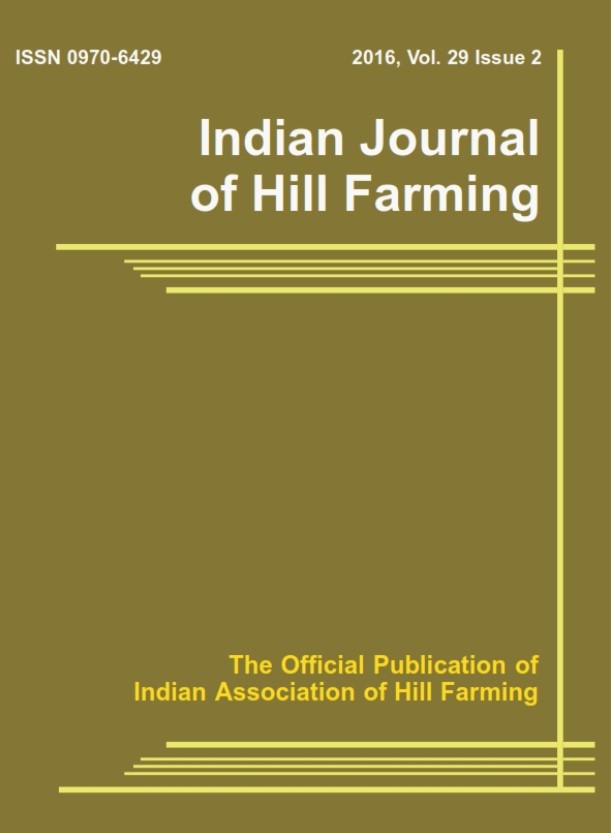Effect of different weed management practices on the weed population dynamics of direct seeded upland rice under Tripura condition
DOI:
https://doi.org/10.56678/Keywords:
Weed management, direct seeded rice, pendimethalin, hand weeding, economics.Abstract
A field experiment was conducted at Krishi Vigyan Kendra, South Tripura during the kharif (wet) season of 2013 and 2014 to study the influence of different weed management practices on weed population dynamics of direct seeded upland rice under Tripura condition. The experiment consisted of twelve treatments laid out in a randomized complete block design with three replication. Among the various treatments, pendimethalin @ 1.0 kg ha-1 at 2 Days After Sowing (DAS) + bispyribac sodium @ 25 g ha-1 at 20 DAS (T4 ) recorded the lowest number of all weeds in both the years followed by pendimethalin @ 1.0 kg ha-1 at 2 DAS + one hand weeding at 30 DAS (T3 ). At 60 and 90 DAS, lowest weeds population was recorded by hand weeding thrice at 15, 30 and 45 DAS (T11). The highest net return and benefit cost ratio was observed with the treatment pendimethalin @ 1.0 kg ha-1 at 2 DAS + bispyribac sodium @ 25 g ha-1 at 20 DAS.Downloads
Published
2023-03-31
Issue
Section
Articles
License
Copyright (c) 2023 Mandira Chakraborti, Buddhadeb Duary, Arunasis Goswami (Author)

This work is licensed under a Creative Commons Attribution-NonCommercial-NoDerivatives 4.0 International License.
How to Cite
Effect of different weed management practices on the weed population dynamics of direct
seeded upland rice under Tripura condition. (2023). Indian Journal of Hill Farming, 36(02), 197-202. https://doi.org/10.56678/




